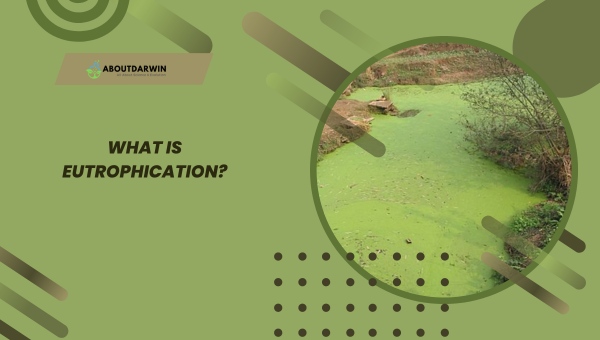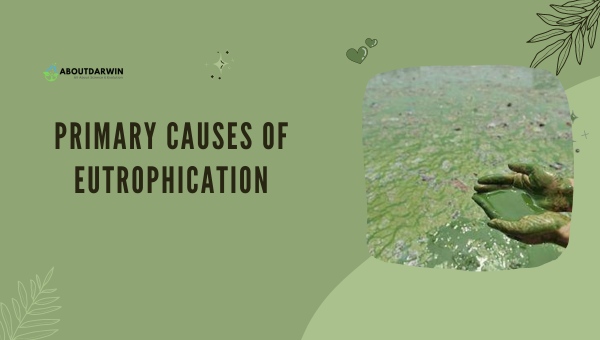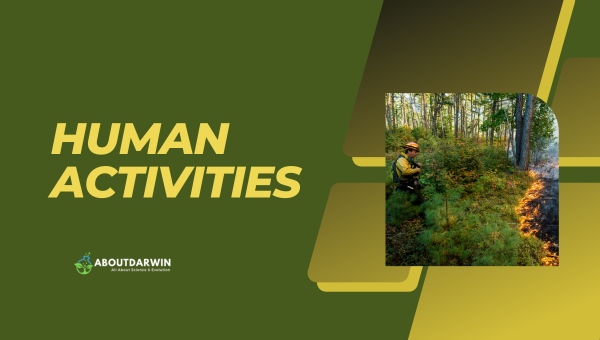Physical Address
304 North Cardinal St.
Dorchester Center, MA 02124
Do you know what eutrophication is? If you’re not familiar with it, you’re not alone. But understanding this natural process is crucial because it’s fast becoming an environmental threat that’s not easy to ignore.
Eutrophication occurs when nutrient levels rise to very high levels in water, leading to excessive plant growth. This process can cause damage to aquatic ecosystems, harm marine life, and even harm human health.
In this blog post, we will provide you with an in-depth understanding of eutrophication, including its causes, stages, and real-life examples. By the end of this article, you will have a better understanding of its impact on the environment, the human role in causing it, and the strategies being adopted to counter it.
So, whether you’re a student, environmental activist, or just curious about our waters and ecosystems’ health, this blog post will be an eye-opener to understanding the crucial role of eutrophication in environmental degradation.
Contents
Eutrophication is a natural process that occurs in water bodies such as lakes, rivers, and oceans. It’s caused by an excessive increase in nutrients, mainly from human activities, which leads to the rapid growth of algae and other aquatic plants.

When these organisms eventually die and decompose, they consume oxygen in the water, resulting in oxygen depletion and the subsequent reduction of aquatic life. Let’s dive into its causes, process, and examples to better understand this environmental issue.
Eutrophication is a serious environmental issue caused primarily by human activities, which can have adverse effects on the environment and human health.

Understanding the causes of eutrophication and implementing preventative measures can help reduce nutrient pollution and promote environmental sustainability in aquatic ecosystems.
| Source | Nitrogen Contribution (%) | Phosphorus Contribution (%) |
|---|---|---|
| Agricultural Runoff | 60-70 | 50-60 |
| Urban Wastewater | 10-20 | 20-30 |
| Airborne Pollutants | 15-25 | 10-20 |
Here are the main points of the primary causes of eutrophication:

Check, Three Types of Rocks That Make Up Our Earth’s Crust
Eutrophication is a natural process, but it becomes a problem when human activities, such as farming and industrial practices, contribute excessive amounts of nutrients, such as nitrogen and phosphorous, to aquatic ecosystems.
When these nutrients become too abundant, plant and algae growth in the water skyrockets, leading to a series of problems for the ecosystem. Here are the steps in the process of eutrophication:
The effects of eutrophication can be devastating, including loss of aquatic habitats, reduced biodiversity, and human health hazards. For example, in the Gulf of Mexico, the extent of nutrient pollution from farming and industrial practices leads to a “dead zone” in the area every year that can be as large as the size of the state of Connecticut.
The consequences of eutrophication, including its ecological and environmental impacts:
Specific industries that contribute to eutrophication include agriculture, which contributes to nutrient loading through the use of fertilizers and manure runoff.
Other industries like municipal wastewater treatment plants and food processing plants also discharge large amounts of nutrient-laden effluent into water bodies.
Check, Top 10 Fascinating Facts About Uranus
Nutrient loading in aquatic environments has become a major environmental issue worldwide. Human activities such as agriculture, urbanization, industrialization, and wastewater management practices contribute significantly to nutrient loading. Excessive nutrient loading causes eutrophication, which results in harmful algal blooms, fish kills, and other detrimental impacts on aquatic ecosystems.
It’s essential to recommend innovative and practical measures to prevent and reduce nutrient loading. In this response, we have identified six measures targeting nutrient pollution from different sources: agriculture, urban development, industrial processes, fisheries/aquaculture, wastewater management, and governance/policy. Implementing these measures is vital for reducing nutrient pollution and fostering the restoration of aquatic ecosystems.
Here are the six innovative and practical measures:
Cover crops can be planted after a harvest or in fallow fields, providing additional soil cover to prevent soil erosion and nutrient runoff. Cover crops can also absorb leftover nutrients in the soil, helping to reduce nutrient loading. Cover crops are a preventive measure that helps reduce the amount of nitrogen and phosphorus, limiting the excess nutrient runoff into nearby water bodies.
Green roofs provide an ecological solution to reduce the burden on the local sewers and stormwater systems. They absorb and store rainwater effectively, and the plants act as filters for pollutants such as nitrogen and phosphorus. Besides, green roofs reduce the urban heat island effect, improve air quality, and provide green space in areas where they are sparse.
Industries can implement best management practices (BMPs) to reduce nutrient loads by improving their processes. These practices include reducing the volume of water discharged, utilizing recirculation technologies, implementing nutrient recycling strategies, and using innovative technologies to reduce nutrient concentrations in wastewater.
Closed aquaculture systems hold fish in enclosed tanks or ponds, effectively preventing excess nutrient discharge into water bodies. The systems involve a recirculation process that removes excess nutrients, and water is continuously recycled. In addition, these systems provide better control over water quality, allowing farmers to optimize feeding and overall fish health.
Constructed wetlands can be used to purify wastewater by removing nitrogen and phosphorus from the effluent. By using natural wetland biogeochemistry, systems comprised of filters and vegetation remove these excess nutrients, reducing the overall impact of wastewater on the environment. As a bonus, these wetlands can also provide habitat for native species and serve as a place to recreate and engage with nature.
Policies and regulations are enacted by organizations, governments, and environmental groups, to protect water bodies from excess nutrient loading. Creating nutrient discharge limits is an essential way to reduce nutrient pollution from municipal wastewater treatment plants and industrial discharges. Standards and guidelines help enforce proper nutrient management and keep our water bodies healthy.
Eutrophication occurs in various water bodies across the globe, impacting ecosystems and the communities that depend on them. While it’s essential to understand eutrophication’s causes and processes, examining real-world examples can provide valuable insights into its impact.
In this section, we’ll explore three well-documented instances of eutrophication: The Gulf of Mexico Dead Zone, Lake Erie, and The Baltic Sea.
The Gulf of Mexico’s dead zone is a prime example of eutrophication’s consequences. This area covers thousands of square miles, where oxygen levels in the water are so low that marine life struggles to survive.
| Year | Size (square miles) |
|---|---|
| 2017 | 8,776 |
| 2018 | 2,720 |
| 2019 | 6,952 |
The dead zone forms due to nutrient pollution, mainly from agricultural runoff, flowing through the Mississippi River and into the Gulf. These nutrients, primarily nitrogen and phosphorus, fuel algae growth, ultimately leading to oxygen depletion when they decompose. Some consequences of this dead zone include:
Lake Erie, one of North America’s Great Lakes, has long dealt with eutrophication. Back in the 1960s and 1970s, the lake was severely affected by excessive nutrient loads, mainly from sewage treatment plant discharges and agricultural runoff.
Through strict regulations and conservation measures, Lake Erie experienced temporary improvements. However, the problem resurged in the 1990s and 2000s, with harmful algal blooms (HABs) and hypoxia (low oxygen levels) becoming prevalent once more. Some challenges associated with eutrophication in Lake Erie are:
The Baltic Sea is one of the most impacted areas by eutrophication globally. It’s a semi-enclosed sea that receives significant nutrient input from the surrounding land and experiences slow water exchange with the North Sea. These factors make it particularly vulnerable to eutrophication.
Nutrient pollution in the Baltic Sea stems from various sources, such as agriculture, wastewater, and airborne deposition. Some consequences of eutrophication in the Baltic Sea include:
These real-world examples demonstrate the severity of eutrophication and its wide-ranging consequences on aquatic ecosystems, economies, and communities. Addressing the root causes is vital for the sustainable management of water resources and overall environmental health.
Eutrophication is a complex process that, although natural, is often exacerbated by anthropogenic activities such as agriculture, urbanization, and wastewater discharges.
By understanding the root causes and impacts of eutrophication, we can work towards reducing nutrient pollution and protecting the well-being of our environment. Through targeted efforts in agriculture, urban development, industrial processes, wastewater management, and governance/policy, we can take action to reduce the nutrient content in our water bodies and promote sustainable ecosystem management practices.
Lastly, I hope this article has helped shed light on the process of eutrophication and the actions needed to prevent it. We must acknowledge the importance of our environment and take responsibility for our individual impact.
Thank you for reading and for your effort toward protecting our planet. Let’s work together with gratitude and regard for our surroundings and future generations.